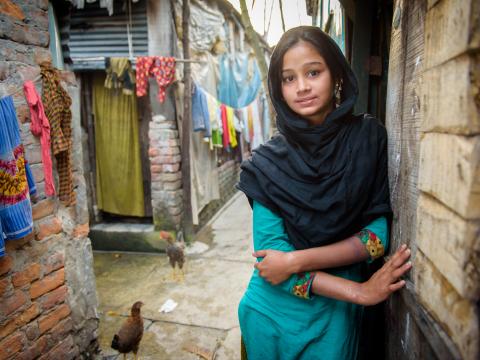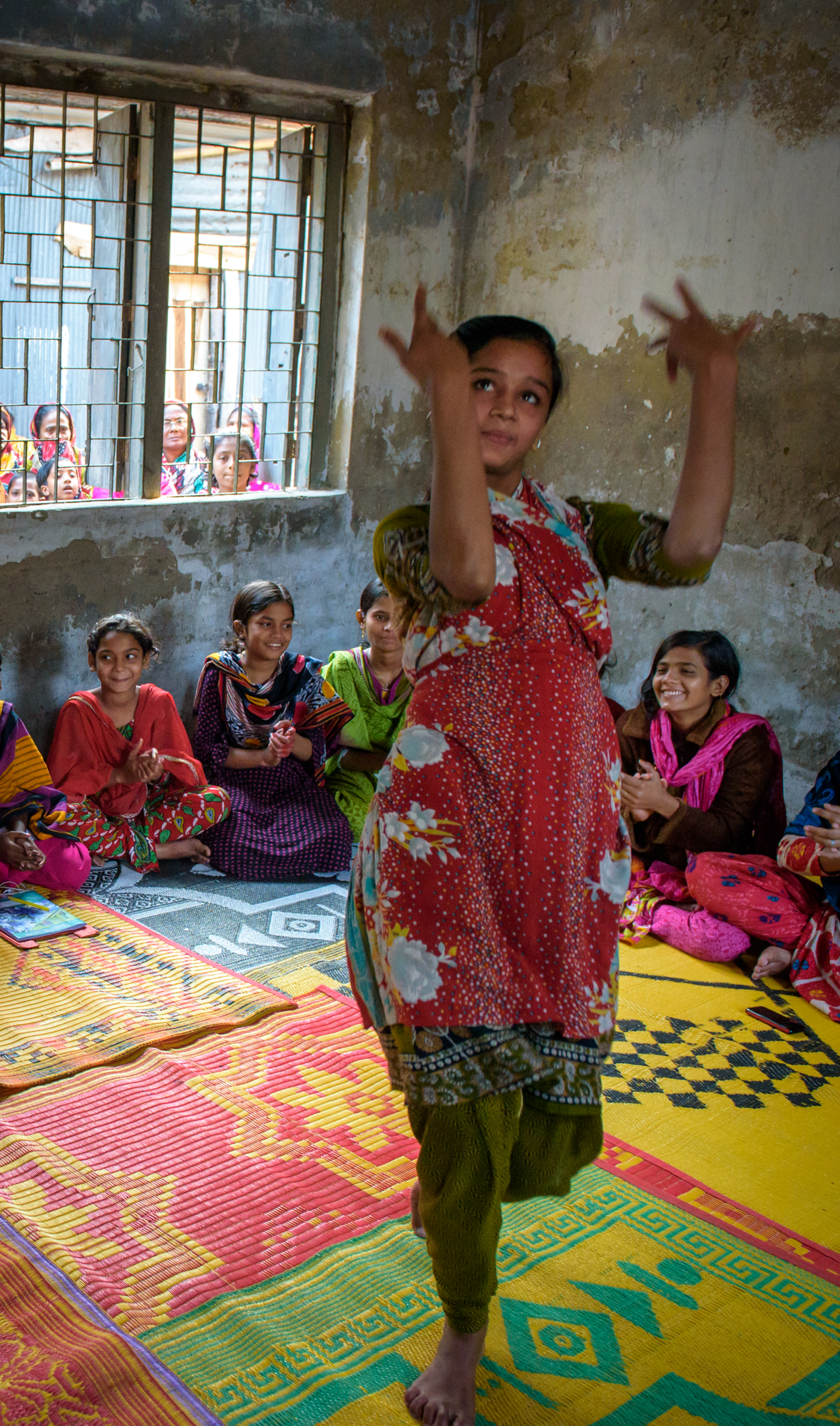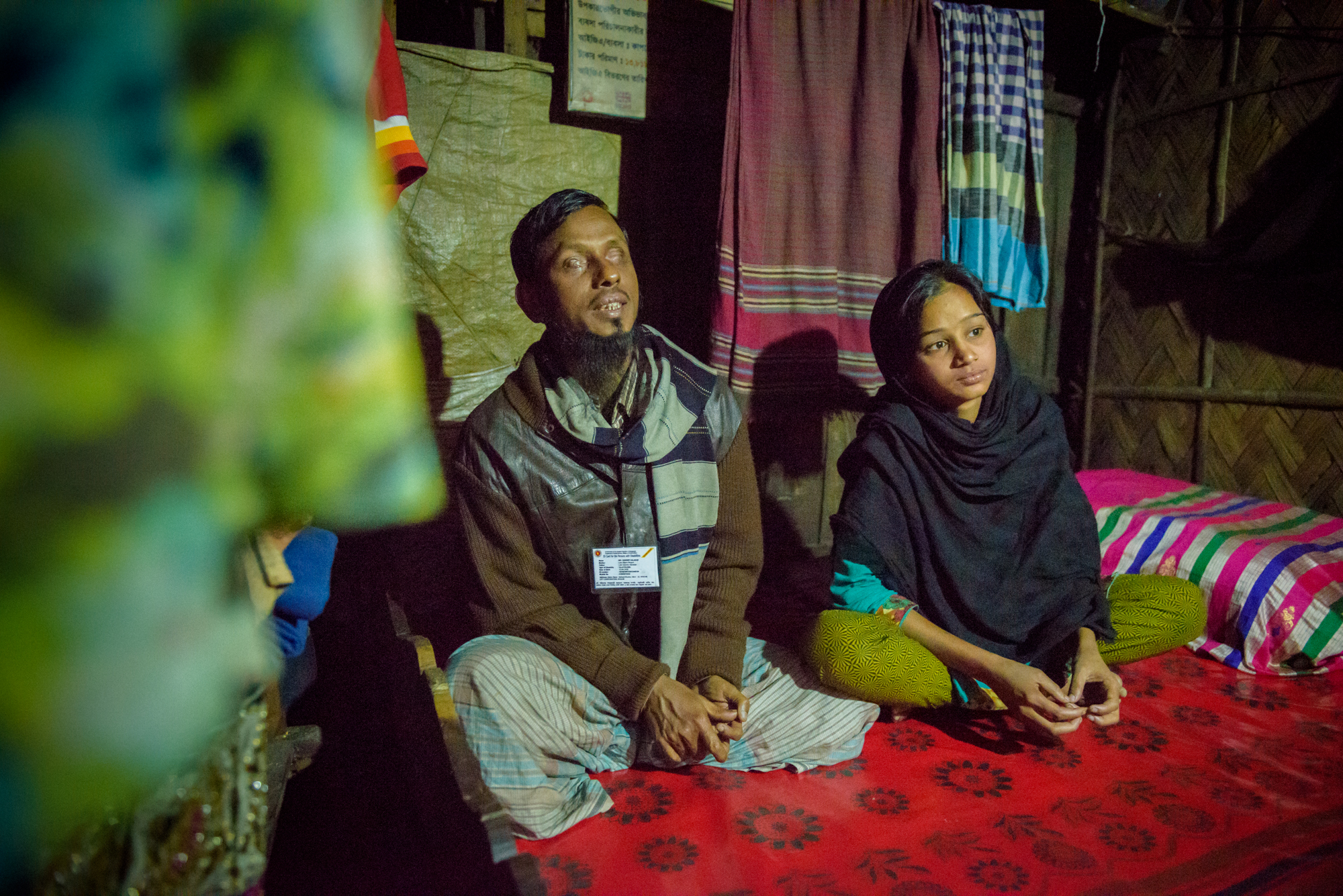Dancing helps Tania escape reality of child labour

A song begins to play on an old CD player in a dark, one-room home in Khulna, Bangladesh, but Tania Akter hits the next button. Another song starts, but she shakes her head disapprovingly and again hits the skip button. And again. And again. And again. But after several skips, a catchy beat begins to play.
She closes her eyes, and the grace with which the 14-year-old carries herself day-in and day-out now directs every part of her body as it makes time with the music, emotionally transporting her far from her poverty-stricken neighbourhood in Bangladesh.
The music transforms her, freedom replacing her burdens and joy replacing her hardships. For a moment, she lets down the composure that consumes her life, and she doesn't hear the people who call her names or the boss who yells at her to work more. She doesn't worry about how she will provide for her father and 10-year-old sister, or what she will cook them for dinner. She doesn't feel the pain she endures working each day but rather simply the song in her heart.
The accident
When Tania was 5, life felt more normal. Her mother was in their home taking care of her and her sister, Suriaya, who was just a baby at the time. Her father, Somir Hawlader, worked selling cosmetics at a travelling fair.
Tania didn't have to work. She could play with her friends. She even used to go to school.
"They snatched me and threw acid on my eyes," Somir says. "They broke my arm and hit my head. After about 10 minutes, I felt my eyes becoming paralysed, and I couldn't see."
But nine years ago, while Somir was working, men robbed him. And it wasn't enough to just rob him and move on to another victim. Instead, they brutally attacked him.
"They snatched me and threw acid on my eyes," Somir says. "They broke my arm and hit my head. After about 10 minutes, I felt my eyes becoming paralysed, and I couldn't see."
Somir was now blind.
He couldn't work. He couldn't care for his family. Now he relied completely on others, and it took its toll on his wife. She left him a year later, leaving Tania, then 6, to run the house and care for Suriaya, who was just 18 months old.
The struggle to provide
While only a child, Tania stepped up and even while attending school, each day she would go to the market to buy food and cook it as well. Her favourite meal to make is dim bhuna, or egg curry. She also learned how to do all the cleaning, laundry, and household chores. The family needs between $37 and $75 (USD) a month to cover their needs.
Somir receives a government ration of about $6.25 a month because of his disability, but it's not enough to support his daughters, so he turned to begging on the streets to earn money. He typically begs three days a week and earns about $2.50 a day. He has to be careful though, as the government has tried to curtail begging.
"I can't go on the street, or they will catch me, so I am afraid of how to provide for my family," Somir says.
The government helps people who beg by providing them with cups sell tea on the streets. It's a great idea in theory, but Somir isn't able to see the currency people give him to make change or know if he's being cheated, and he can't tell how much tea he's using in the water or how full the cup is when he pours.
"If I would like to sell tea, I would need to take my younger daughter," he says. "I can't take my older daughter because people will stare at her, and I'm concerned for her safety."
It's a common concern for parents of girls in Bangladesh, where women are seen as inferior, treated differently than men, and often married off younger than the legal age of 18. To avoid bringing unwanted sexual attention to Tania, he takes Suriaya, now 10, instead but the days she goes with him to beg she misses school.
"I miss school, I liked to study Bangla... I have forgotten many things," says Tania
She usually is out of class one day a week, which seems nearly harmless, but multiplied week after week, year after year, Suriaya will quickly fall behind and may even eventually drop out of school. Tania doesn't want to see her sister have to drop out of school like she finally had to three years ago.
"I miss school, I liked to study Bangla — I like the rhymes and poems," she says. Tania can still read, but very slowly and says, "I have forgotten many things."
Work instead of school
Instead of school, Tania spends many of her days peeling piles of icy shrimp — squatting for hours with little rest in order to avoid sitting on a dirty, wet cement floor at a local fish depot.
"I get pain in my knees and in my waist," she says. She can stand to take a break and help relieve the pain, but in eight hours of work, she only takes the equivalent of about 20 minutes worth of breaks throughout the shift.
Beyond being laborious, the work is also dangerous, as there's an incredibly sharp part of the fish that is like a razor blade. "I'm really sad when I get cut with the saw of the fish," Tania says. "I get severe pain."
"I get pain in my knees and in my waist," Tania says.
On top of that, the shrimp are in large barrels of ice, so she struggles to keep her hands warm as she works. "I put water in a pot, and when my fingers get hard, I dip them in the water," she says.
Even at room temperature, the water helps bring some small relief to her chilled hands. It's important she keep her fingers warmed not just for comfort or health but because when she loses some of the feeling and they're hard to move, it increases the likelihood of getting hurt. "There's more chance to get cut when I can't peel properly, so then I get cut almost every time," Tania says.
During the off season, she may work for just a few hours a couple days a week to make between 50 and 75 cents a day. During the busy season, a boss may come to her home and wake her in the middle of the night — if that's when the shrimp arrive — and she has to get up and goes in. For her overnight work of about seven to eight hours, she may earn about $1.85.
"When they bring enough shrimp, I have enough money, but when they don't, I lack," Tania says.
A hope to learn
The monotony of peeling shrimp fortunately hasn't yet peeled away at Tania's dreams.
"I want to be a nurse," she says. "I will feel good when I'm able to help the children here and provide treatment support, and if they get cut, I will help them get dressings."
To help her get there, World Vision is beginning a Child-Friendly Learning and Resource Centre (CFLRC) in Tania's community.
"When they bring enough shrimp, I have enough money, but when they don't, I lack," Tania says.
The centre is part of a new project called Jiboner Jannya, which means well-being of life, and aims to help about 51,000 adults and children like Tania in the region. The program hopes to protect some of the most vulnerable children who are at risk for the worst forms of child labour, abuse, neglect and exploitation.
Programme facilitators use games, skits and group activities to teach the children about life skills, such as how to work past disagreements by finding solutions that benefit both parties. But children also learn about their rights to protection and the dangers of labour, trafficking and abuse, says Augustine Amal D'Rosario, the area coordinator for the project. The CFLRC will also provide catch-up education in reading, writing, math, and other subjects to children who have missed school or fallen behind.
Tania and other children will attend the centre for a few hours each day, but that cuts into their work and other household responsibilities, so in leading by example, World Vision staff also work with the children's employers and families to find solutions that work for everyone.
Provash Chandra Biswas, the project manager, explains that staff members work hard to educate employers about why children need to attend the centre. They gain their support and agreement to allow the kids to attend for a small part of the day. But with fewer hours to work, that can harm the families, so staff also have to work with parents like Somir to teach them how the centre will benefit their children and even why kids need to learn and be protected. By spending time with the parents to educate them about the program, answer their questions, and also learn about their struggles, families feel empowered to send their children to the CFLRC.
"I like the programmes. Whenever World Vision runs a programme, they take care of their children. They ensure their participation and make sure they reach home safely, says Somir, speaking about his experience with Suriaya attending a different programme when she was younger.
Additionally, World Vision will provide income assistance to help the families with the wages lost by their children attending the centre in the near term. But that's just a temporary solution, so to see long-term change, parents will learn new job skills that can help them create better livelihoods for their families in the long term as well.
At the centre, Tania will get to learn, with the hopes that if she can get caught up on her education, she might be able to re-enter formal schooling with the support of a one-year scholarship.
"I have many things here at home to do taking care of my father and sister, but I'll try to do it all quickly and still go to school," she says hopefully.
In addition to preparing Tania and other children who work to return to school, the CFLRC will also provide vocational training for older children so they can better support their families and not be engaged in harmful labour.
"I hope World Vision will provide us sewing training," Tania says. "I don't want to be a tailor, but if I don't have to work at the shrimp depot, I could do something at home, and tailoring could be it."
But just as important as learning, Tania and the other children will get to play and simply have time to do the things that children enjoy doing. She says she looks forward to attending the centre and smiles saying, "I will have a chance to learn dancing and singing."
The Facts:
An estimated 150 million children worldwide are engaged in child labour.
In the least developed countries, nearly one in four children (ages 5 to 14) are engaged in labour that is considered detrimental to their health and development.
Asia-Pacific region that has the most child labourers ages 5-17 (77.7 million) as compared with 59 million in Sub-Saharan Africa and 12.5 million in Latin America and the Caribbean.
Children who are forced to work are often denied many of the rights due to them as children, such as the right to study.
It takes a world to end violence against children. It takes a world to end child labour.
Join us as we work to end violence against children.


